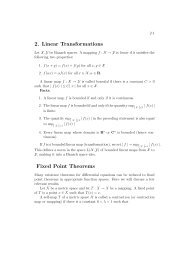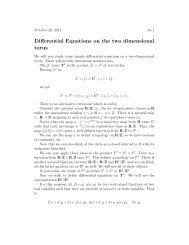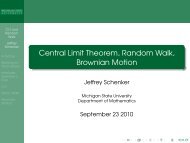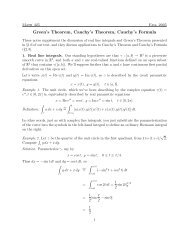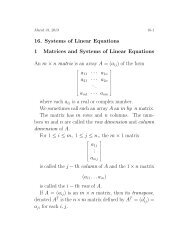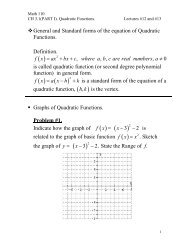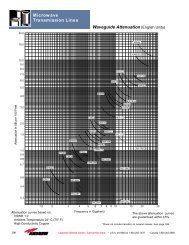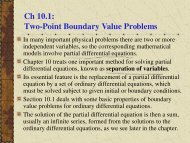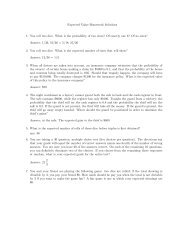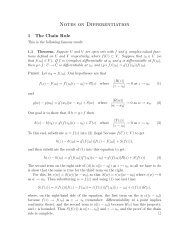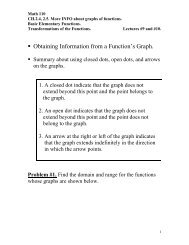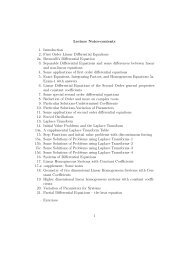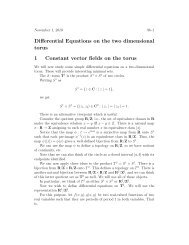12. Forced Oscillations
12. Forced Oscillations
12. Forced Oscillations
Create successful ePaper yourself
Turn your PDF publications into a flip-book with our unique Google optimized e-Paper software.
August 20, 2012 12-3If ω 0 − ω is small, then the function sin( ω 0t−ωt) oscillates much more2slowly than sin( ω 0t+ωt)). The graph of this product is illustrated in the2figures below. This gives rise to the phenomenon of “beats” in music whentwo vibrating strings have very close frequencies.Effect of Damping in <strong>Forced</strong> <strong>Oscillations</strong>:If we have a forced oscillation of the formmü + γ ˙u + ku = F 0 cos(ωt),with γ ≠ 0, thenthe general solution has one of the following forms:Case 1: γ 2 − 4km > 0whereu(t) = c 1 e r 1t + c 2 e r 2t + A cos(ωt) + B sin(ωt)r i = −γ ± √ γ 2 − 4km.2mAs t → ∞, the homogeneous part tends to zero. So, the solution approachesan oscillation with the same frequency as the external force. Thefunctionsc 1 e t 1t + c 2 e r 2t , A cos(ωt) + B sin(ωt)are called the transient and steady state motions of the system, respectively.Case 2: γ 2 − 4km < 0.Here, if ω 1 = √ 4km − γ 2 and a = γ , then the general solution has the2mformu(t) = e −at (c 1 cos(ω 1 t) + c 2 sin(ω 1 t))+A cos(ωt) + B sin(ωt)Again the first part tends to zero as t → ∞, and the solution tends toan oscillation with the same frequency as the external force. The first andsecond parts are again called the transient and steady state solutions.Some plots of solutions (see next page):



